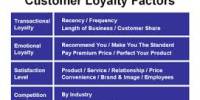Alternative Strategies for Market Targeting
A single marketing program for entire market is not likely to be successful. Thus companies go for segmenting their markets which enables them to make more efficient use of their marketing resources.
Target Marketing involves breaking a market into segments and then concentrating your marketing efforts on one or a few key segments consisting of the customers whose needs and desires most closely match your product or service offerings.
Basically five alternative patterns/strategies are available.
A company may opt for any one of the following strategies for market targeting based on the situations:
(1) Single Segment Concentration:
It is the simplest case. The company selects only a single segment as a target market and offers a single product. Here, a product is one; the segment is one. For example, a company may select only higher income segment to serve from various segments based on income, such as poor, middle-class, elite class, etc. All the product items produced by the company are meant for only a single segment.
Single-segment offers some merits like:
(1) A company can gain a strong knowledge of segment’s needs and can achieve a strong market position in the segment.
(2) A company can specialize its production, distribution, and promotion.
(3) A company, by capturing leadership in the segment, can earn a higher return on its investment.
It suffers from following demerits like:
(1) A competitor may invade the segment and can shake company’s position.
(2) The company has to pay high costs for change in fashion, habit, and attitude. A company may not survive as risk cannot be diversified.
Mostly, the company prefers to operate in more segments. Serving more segments minimizes the degree of risk.
(2) Selective Specialization:
In this option, the company selects a number of segments. A company selects several segments and sells different products to each of the segments. Here, the company selects many segments to serve them with many products. All such segments are attractive and appropriate with firm’s objectives and resources.
There may be little or no synergy among the segments. Every segment is capable to promise the profits. This multi-segment coverage strategy has the advantage of diversifying the firm’s risk. A firm can earn money from other segments if one or two segments seem unattractive. For example, a company may concentrate on all the income groups to serve.
(3) Product Specialization:
In this alternative, a company makes a specific product, which can be sold to several segments. Here, the product is one, but segments are many. The company offers different models and varieties to meet needs of different segments. The major benefit is that the company can build a strong reputation in the specific product area. But, the risk is that product may be replaced by an entirely new technology. Many ready-made garment companies prefer this strategy.
(4) Market Specialization:
This strategy consists of serving many needs of a particular segment. Here, products are many but the segment is one. The firm can gain a strong reputation by specializing in serving the specific segment. The company provides all new products that the group can feasibly use. But, reduced size of the market, reduced purchase capacity of the segment, or the entry of competitors with superior products range may affect the company’s position.
(5) Full Market Coverage:
In this strategy, a company attempts to serve all the customer groups with all the products they need. Here, all the needs of all the segments are served. An only very large firm with overall capacity can undertake a full market coverage strategy.
Information Source:
















